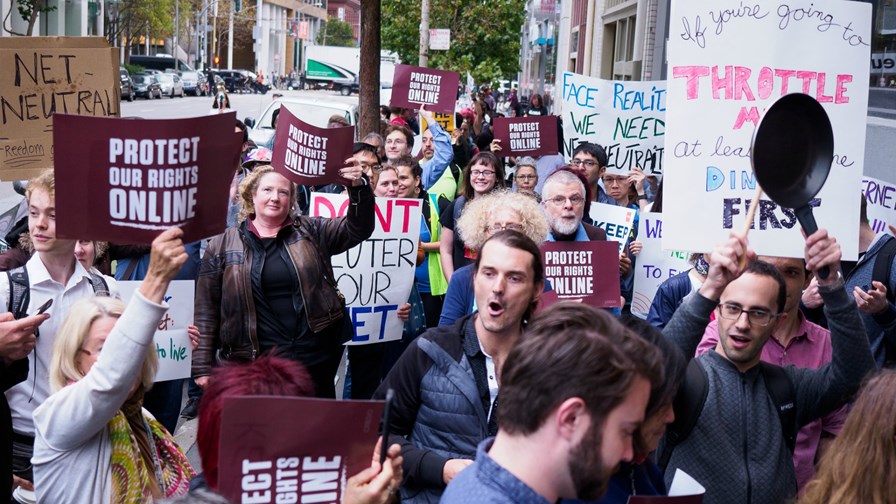
via Flickr © credo.action (CC BY 2.0)
- Pai says it is.
- No it’s not. Neutrality is only expected in the access network
- And... where you can implement non neutral services for individuals and their connections, you can also turn them off!
Since Monday and the passing of the Californian neutrality law, the US ISPs have predictably launched a counter-attack. Comcast, Verizon, Cox Communications, AT&T along with the NCTA, USTelecom, the American Cable Association, and the CTIA have all piled in to file a lawsuit in the US District Court for the Eastern District of California to get the new law overturned.
New facts and allegations are being brought into the conversation. Most notably - as Ajit Pai told reporters in Washington - that the internet is “inherently an interstate service... From a legal perspective we’re on very strong ground,” he claimed. And further that because of this it would be impossible to operate with different regulations in different states.
There’s quite a few problems with this line of attack. There’s the obvious one: that in abrogating authority over ISPs, the FCC had left a legal vacuum which, common sense would indicate, could and should be filled by state authorities. Since the FCC had no interest in protecting citizens’ rights then states had, reluctantly, to take up the challenge.
But I think there’s an even better pushback against all this because of a very obvious contradiction. Pai’s assertion that the interstate nature of the Internet rules out local legislation sort of works as a legal abstraction, but in reality it is dead wrong.
Simply put, if you have the technology available to introduce and manage discriminatory, non-neutral services, then that same technology can be used to turn them off just as selectively and just as automatically, depending on a user’s location. How could it be otherwise?
Take personalisation - one of the big ‘wouldn’t it be nice’ wet dreams harboured by ISPs is the notion that you could personalise the Internet and get users to pay independently for the sites they wanted to access - 2 dollars for this, 5 dollars for that, and so on. The defining details for that would reside in the user’s profile which is constructed when his or her service is ordered and fulfilled by the OSS/BSS system.
Another is to offer better than ‘best effort’ data performance, perhaps on an ad hoc basis, when users are experiencing difficulty and seeing whirling wheels on their screens (seriously - that was a thing!).
The point is, that to make any of this ISP behaviour real you have to have individual user profiles which cause the system to bill (say) in one way for one customer, in a different way for the next. They have to operate on the system in real time.
So where an ISP is servicing a customer on the California side of the state line, his/her service profile goes neutral while those on the other side of line get whatever the ISP sees fit.
Email Newsletters
Sign up to receive TelecomTV's top news and videos, plus exclusive subscriber-only content direct to your inbox.




